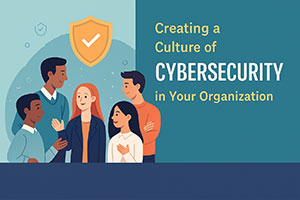
How attackers are using AI
Cybercriminals are often early adopters, and they have embraced AI to make their attacks faster, smarter, and harder to detect. Instead of clumsy phishing emails riddled with typos, attackers can now generate flawless, personalized messages that slip past filters and look authentic to the recipient. Deepfake technology can mimic the voice of a trusted executive, convincing an employee to transfer funds or share credentials. Automated bots can scan for vulnerabilities across thousands of systems at once, launching attacks at a scale that no human could manage alone. The result is a threat landscape where attacks are not only more frequent but also more convincing.
How defenders are using AI
Defenders, however, are not standing still. IT professionals and security vendors are using AI to process massive amounts of data, spot unusual behavior, and reduce the flood of false positives that overwhelm security teams. AI-driven threat detection can identify suspicious patterns across networks and endpoints. Automated response tools can contain routine threats faster than a human could act. And advanced threat intelligence platforms can digest global data to flag emerging risks before they become widespread. For smaller IT teams, these tools can mean less time wasted on noise and more time focused on true vulnerabilities.
The limits of AI
It’s tempting to see AI as a silver bullet, but it isn’t. AI tools are only as effective as the data they are trained on — and they can still be fooled. Attackers can manipulate or bypass models, and overreliance on AI can lead to complacency.
Remember:
- AI augments human judgment; it does not replace it.
- Skilled IT staff are still essential to provide context.
- Human oversight is the safeguard against blind trust in automation.
Preparing your organization
Preparing for AI in cybersecurity means addressing both sides of the equation. Organizations should evaluate AI-powered security tools carefully, choosing solutions that truly add efficiency and insight. At the same time, employees and IT staff need to be trained on how attackers are using AI against them. Awareness of deepfakes, AI-generated phishing, and other new tactics is just as critical as adopting defensive AI tools. And while AI can strengthen defenses, it must always be paired with proven practices such as multi-factor authentication, timely patching, and continuous network monitoring.
The bottom line
AI is reshaping cybersecurity on both sides of the battlefield. Organizations that recognize this dual role — ally and adversary — will be better prepared to defend themselves in the years ahead.
At SpartanTec, we help businesses adopt AI responsibly while preparing for AI-powered threats. Because in the end, AI is only as effective as the people and processes behind it.
👉 Talk with SpartanTec about how to integrate AI into your cybersecurity strategy safely and effectively.


